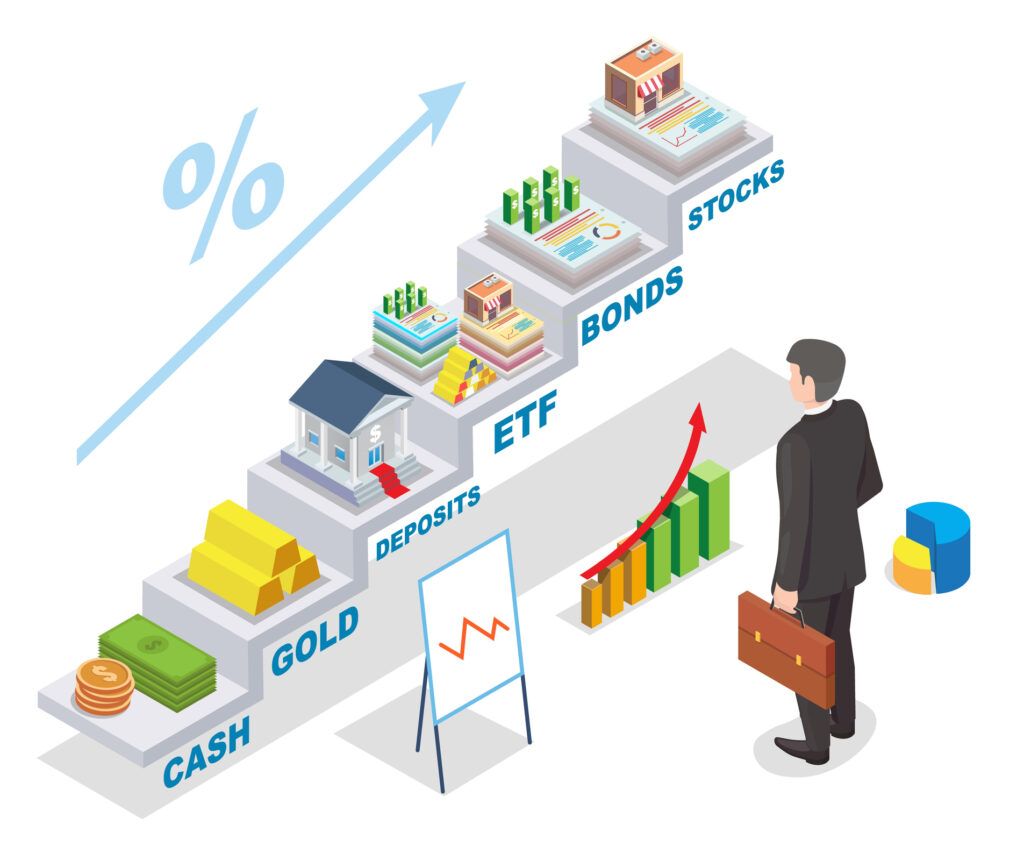Today, we will delve into the depths of the financial markets and take a comprehensive look at SPDR (Standard & Poor’s Depository Receipts) and how its investment strategy is shaping the investment landscape.
This article aims to provide an understanding of how these revolutionary investments help individuals and institutions make informed decisions.
Understanding the Genesis of SPDR
SPDR, pronounced as ‘spider’, are an exchange-traded funds (ETF) family, managed by State Street Global Advisors, that tracks the Standard & Poor’s 500 Index.
Launched in 1993, it marked the dawn of a new era in investment strategies. By purchasing shares of an SPDR ETF or SPDR Stock, investors can gain exposure to the performance of the S&P 500 without having to purchase each individual stock.
When you index track through an SPDR ETF, you gain access to a broad asset allocation, portfolio diversification and potential dividend yields whilst being seconds away from liquidity.
It is now the oldest ETF in still trading, with the largest market capitalisation and an impressive history of continuous growth.
The Mechanics Behind SPDR
ETFs are similar to mutual funds but are traded on an exchange, very similar to stocks. Click here to learn more about ETFs vs mutual funds.
They combine the diversification benefits of mutual funds with the flexibility and ease of trading that comes with stocks.
We find this amalgamation to be particularly appealing for investors looking for a balanced approach to passive investing.
Hampton Bridge is a firm believer in allocating ETFs into a balanced portfolio.
The potential for growth, safety, liquidity and exposure all add up to ETFs being a good choice for the smart investor.
It is not just a case of picking any ETF off the shelf.
Having the knowledge that allows you to choose an SPDR sector ETF or any State Street ETF gives you cost-effective portfolio diversification.

The Array of State Street SPDR Products
Here is a list of some of the available options which investors have when purchasing an SPDR ETF.
1. S&P 500 (SPY)
As a pioneer, the S&P 500 (SPY) is the most prominent product. It aims to closely mirror the performance of the S&P 500 Index, which consists of 500 of the largest publicly traded companies in the US. It provides investors with broad exposure to the US stock market.
2. SPDR Gold Shares (GLD)
This sector ETF is an example of a commodity-based ETF, a sector ETF. It seeks to reflect the performance of the price of gold bullion. It’s an excellent option for investors looking to hedge against market volatility or inflation.
3. SPDR Bloomberg Barclays High Yield Bond ETF (JNK)
For investors looking at the bond market, the JNK offers exposure to high-yield corporate bonds, offering potentially higher returns compared to regular bonds.
Advantages of Investing in SPDR
We believe that these investments have a distinct edge due to their unique characteristics:
- Diversification: Providing investors with exposure to a wide range of assets, reducing the risk of holding a single security.
- Liquidity: Like stocks, they can be bought and sold throughout the trading day.
- Lower Costs: Generally have lower expense ratios compared to traditional mutual funds.
Strategies for Investing in SPDR
We advocate for a calculated approach to SPDR investment. Here are some strategies:
- Long-Term Growth: Investors can hold them for an extended period, benefiting from the compound growth of stocks.
- Portfolio Hedging: By including non-correlated assets like a gold investment, investors can protect their portfolios against market downturns.
- Sector Rotation: Investors can transition between different options, focusing on specific industries based on economic cycles.
Understanding Risks
Like any investment, they do not come without risk. The value of an investment will fluctuate with the market. However, due to the inherent diversification, risk is often lower when compared to investing in individual stocks. ETFs are generally considered to be a low-med risk asset.

Frequently Asked Questions (FAQs)
What are SPDR ETFs and how do they work?
SPDR ETFs, or Standard & Poor’s Depository Receipts, are a family of exchange-traded funds that track various indices, primarily the S&P 500. They operate similarly to stocks, allowing investors to buy shares in a broad market index, offering diversification and ease of trading.
Why are SPDR ETFs considered a good choice for investors?
SPDR ETFs are valued for their ability to offer broad market exposure, portfolio diversification, and liquidity, all at relatively lower costs compared to traditional mutual funds. This makes them an appealing option for both individual and institutional investors seeking a balanced approach to passive investing.
Can investing in SPDR ETFs help in hedging a portfolio?
Yes, by including non-correlated assets like Gold Shares (GLD), investors can hedge their portfolios against market downturns, thus providing a layer of protection against market volatility.
What are some popular SPDR ETFs and their objectives?
Popular ETFs include the S&P 500 (SPY), which mirrors the S&P 500 Index, Gold Shares (GLD) that track the price of gold bullion, and Bloomberg Barclays High Yield Bond ETF (JNK), which offers exposure to high-yield corporate bonds.
What are the risks associated with investing in SPDR ETFs?
While these ETFs offer diversification which can lower risk, they are still subject to market fluctuations. The value of these investments can vary with market conditions, but the risk is generally considered lower than investing in individual stocks.
How does SPDR differentiate from traditional mutual funds?
They combine the diversification benefits of mutual funds with the flexibility and ease of trading associated with stocks. They generally have lower expense ratios and can be traded throughout the day like stocks, unlike mutual funds which are priced at the end of the trading day.
What strategies can be employed while investing in SPDR ETFs?
Strategies for investing in ETFs include long-term growth through compound growth of stocks, portfolio hedging using non-correlated assets, and sector rotation to focus on specific industries based on economic cycles.
Conclusion: The Unstoppable March of SPDR
The advent of State Street investments has revolutionised the investment landscape by offering diversification, flexibility, and a lower cost structure. As the market evolves, we expect State Street to play a significant role in shaping investment portfolios.
If you want to access the investments we have talked about or would like any advice or help with other areas of finance or investment, then please contact us today.



